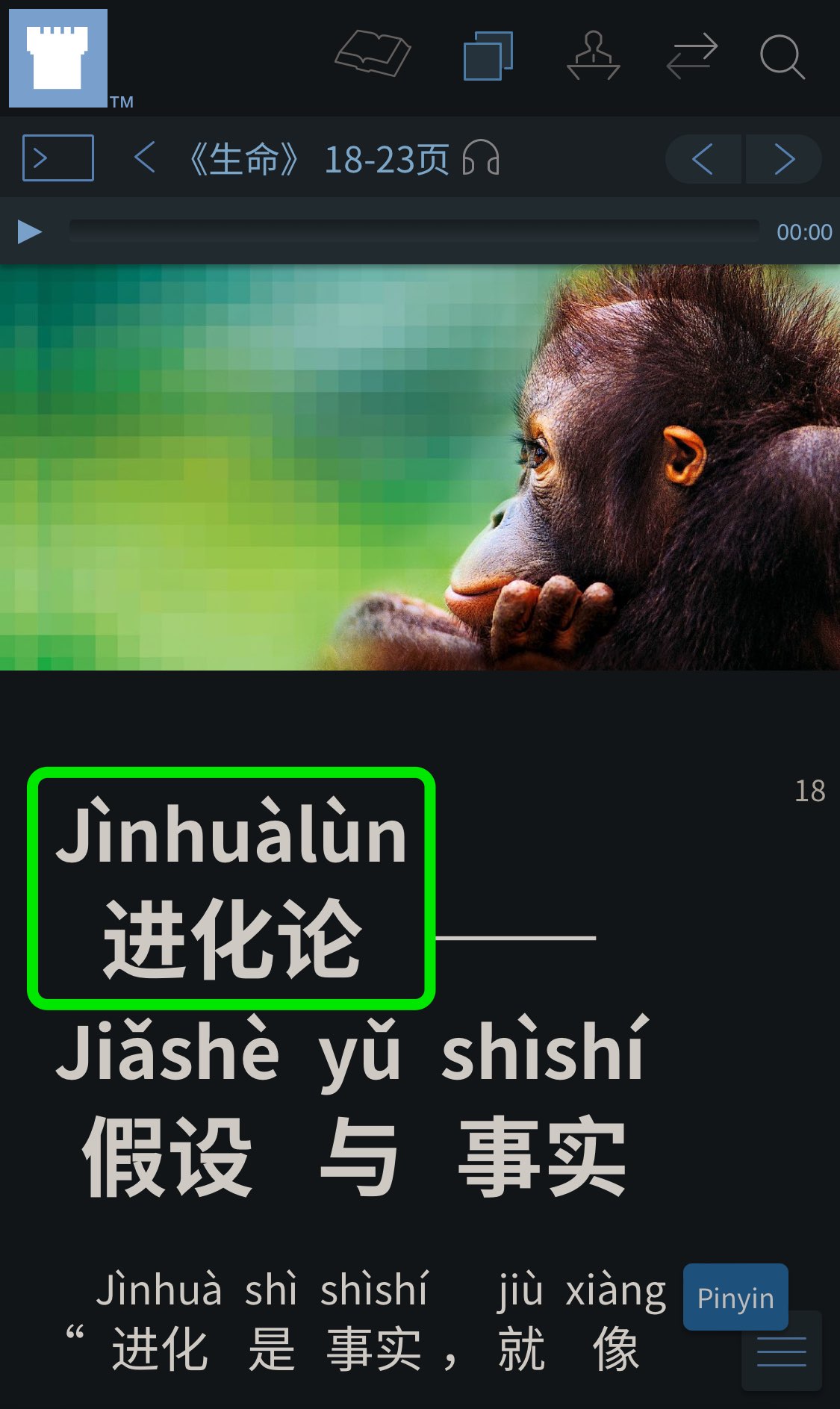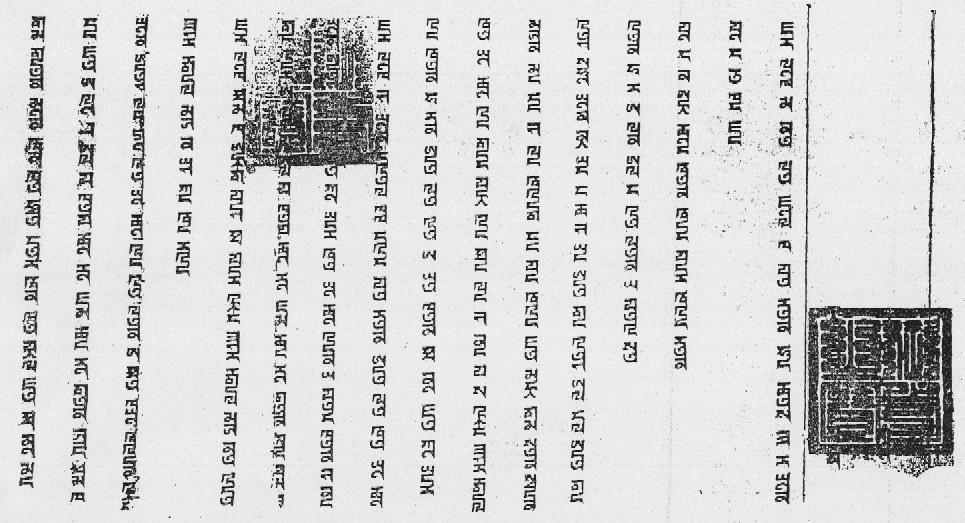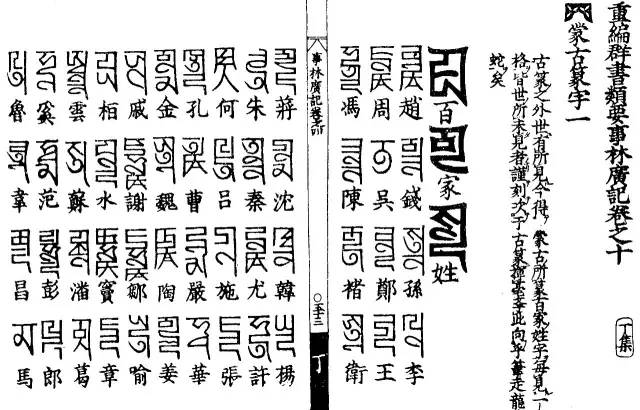wùzhǒng (wù·zhǒng {thing → [creature]} · species → [species] 物种 物種) ← Tap/click to show/hide the “flashcard”
The Shēngmìng Láizì Chuàngzào Ma? ((Shēngmìng Life 生命) (Lái·zì Came · From 来自 來自) (Chuàng·zào Initiating · {Making, Creating} → [Creating] 创造 創造) (Ma [? ptcl for “yes/no” questions] 吗 嗎)? → [Was Life Created? (lc)]) (Was Life Created? (lc)) brochure and the Shēngmìng de Qǐyuán—Zhíde Sīkǎo de Wǔ Ge Wèntí ((Shēngmìng Life 生命) (de ’s 的) (Qǐ·yuán {Rising → [Starting]} · Source → [Origin] 起源/原)—(Zhí·de Worth · Getting → [Worth] 值得) (Sī·kǎo {Thinking About} · Examining 思考) (de ’s 的) (Wǔ Five 五) (Ge [mw] 个 個/个) (Wèn·tí Asking · Subjects → [Questions] 问题 問題) → [The Origin of Life—Five Questions Worth Asking (lf)]) (The Origin of Life—Five Questions Worth Asking (lf)) brochure were originally published back in 2010, but recently, the English version of the Was Life Created? brochure was updated to the December 2022 Printing, and the Mandarin version of it was updated to the February 2023 Printing. Also, the Was Life Created? brochure and the Origin of Life brochure are now in the Teaching Toolbox section in the JW Library app. So, it would be good to consider some of the expressions used in the Mandarin versions of these publications that can be so helpful when discussing whether life was created.
Feeling Unqualified?
Whether or not a Creator exists is one of the first questions that needs to be settled in order for one to make spiritual progress, and these days, much scientific or technical information, both accurate and inaccurate, is available in connection with this question. So, it would be good for us to try our best to get conversant with such scientific or technical information.
However, perhaps some hesitate to discuss scientific or technical subjects in their ministry (especially in their Mandarin ministry), because of feeling unqualified, or not “smart” enough. Even practising professionals in technical industries such as web or app development, etc., sometimes talk about being affected by impostor syndrome, so it wouldn’t be surprising if some of us in the Mandarin field who have neither been highly educated about science nor systematically trained on Mandarin may feel like impostors when confronting the prospect of speaking to people in Mandarin about scientific subjects.
The Bible contains many examples of ones who similarly felt unqualified to do what Jehovah directed them to do, such as Moses, Gideon, Amos, Jeremiah, etc. However, despite them feeling unqualified, Jehovah provided them with the help and support required for them to ultimately accomplish what he wanted them to accomplish. Also, David coming off victorious against Goliath is a classic example of someone who, because of Jehovah’s help, succeeded in spite of appearing unqualified from a human viewpoint.
The article “Do Not Limit Yourself—Overcoming Feelings of Inadequacy”, from the November 2012 Kingdom Ministry, makes some good points that can help us if we feel unqualified to participate in some aspect of our God-given ministry. It’s focused on the Bible study activity in general, but the points it makes can also apply to, say, speaking to people in Mandarin about evolution and creation.
Related Mandarin Resources
Speaking of speaking to people in Mandarin about evolution and creation, helping us to do so is the official Pīnyīn (Pīn·yīn {Piecing Together of} · Sounds → [Pinyin] 拼音) material for the Shēngmìng Láizì Chuàngzào Ma? ((Shēngmìng Life 生命) (Lái·zì Came · From 来自 來自) (Chuàng·zào Initiating · {Making, Creating} → [Creating] 创造 創造) (Ma [? ptcl for “yes/no” questions] 吗 嗎)? → [Was Life Created? (lc)]) (Was Life Created? (lc)) brochure and for the Shēngmìng de Qǐyuán—Zhíde Sīkǎo de Wǔ Ge Wèntí ((Shēngmìng Life 生命) (de ’s 的) (Qǐ·yuán {Rising → [Starting]} · Source → [Origin] 起源/原)—(Zhí·de Worth · Getting → [Worth] 值得) (Sī·kǎo {Thinking About} · Examining 思考) (de ’s 的) (Wǔ Five 五) (Ge [mw] 个 個/个) (Wèn·tí Asking · Subjects → [Questions] 问题 問題) → [The Origin of Life—Five Questions Worth Asking (lf)]) (The Origin of Life—Five Questions Worth Asking (lf)) brochure that Jehovah’s organization has made available. Also, some related unofficial 3-line and Pīnyīn (Pīn·yīn {Piecing Together of} · Sounds → [Pinyin] 拼音) Plus material is also available, as detailed at the tiandi.info/lc short link for Chinese language-learning resources for the Was Life Created? brochure. (Pīnyīn (Pīn·yīn {Piecing Together of} · Sounds → [Pinyin] 拼音) Plus material and a short link for the Origin of Life brochure are also in the works.)
This blog will also seek to help out by occasionally discussing expressions that appear in the Mandarin versions of the Was Life Created? brochure and the Origin of Life brochure. One such expression is this week’s MEotW, “wùzhǒng (wù·zhǒng {thing → [creature]} · species → [species] 物种 物種)”, which is used to translate the English word “species”.
Species and Kinds in Mandarin
First, what does “species” even mean in English? One dictionary gives this definition:
Biology A group of closely related organisms that are very similar to each other and are usually capable of interbreeding and producing fertile offspring.
Now, consider this footnote in the Was Life Created? brochure that discusses how “species” compares to the term “kind” that’s used in the Bible’s Genesis account:
While the word “species” is used frequently in this section, it should be noted that this term is not found in the Bible book of Genesis. There we find the term “kind,” which is much broader in meaning. Often, what scientists choose to call the evolution of a new species is simply a matter of variation within a “kind,” as the word is used in the Genesis account.
With the above in mind, note that the Was Life Created? brochure (Mandarin version © 2010, 2023-02 Printing) uses “wùzhǒng (wù·zhǒng {thing → [creature]} · species → [species] 物种 物種)” to translate “species”, and it uses the “lèi ({kind; type; class; category; genus [of]} | {resemble; be similar to} 类 類)” in “rénlèi (rén·lèi human/man·kind 人类 人類)” to translate “kinds”, as referred to in the Bible book of Genesis.
In comparison, worldly dictionaries like those that can be viewed in the Pleco app join the Was Life Created? brochure in presenting “Wùzhǒng Qǐyuán ((Wù·zhǒng {Thing → [Creature]} · Species’ → [Species’] 物种 物種) (Qǐ·yuán {Rising → [Starting]} · Source → [Origin] 起源/原) → [Origin of Species])” as the Mandarin translation of “Origin of Species”, the famous book by Charles Darwin. Also, note that in the Mandarin translation of this passage:
The Bible word “kinds” is not a scientific term, but it seems to refer to broad divisions of life-forms. Thus, a single “kind” may include many species or varieties.
the 2021 Awake, No. 3 uses “zhǒnglèi (zhǒng·lèi {{species [of]} | {seed; strain; breed [of]} | {type [of]}; {kind [of]}} · {kind; type; class; category; genus [of]} 种类 種類)” to translate “species”, and it follows the current Mandarin New World Translation Bible (nwtsty) in using “lèibié (lèi·bié kind; type; class; category; genus · differentiated → [classification; category; kind] 类别 類別)” to translate “kinds”. (Compare Genesis 1:24, 25 in English and Mandarin.) Also, in case you ever encounter “pǐnzhǒng (pǐn·zhǒng product · variety → [breed; strain; variety] 品种 品種)”, that’s what this issue of Awake! uses to translate “varieties”.
For convenience:
The direct link for the current generation Pīnyīn (Pīn·yīn {Piecing Together of} · Sounds → [Pinyin] 拼音) Plus resource for the Was Life Created? brochure is:
The short link for Chinese field language-learning links for the Was Life Created? brochure is:
More Pīnyīn (Pīn·yīn {Piecing Together of} · Sounds → [Pinyin] 拼音) and Pīnyīn (Pīn·yīn {Piecing Together of} · Sounds → [Pinyin] 拼音) Plus web material based on the Mandarin Was Life Created? brochure will be made available in the Pīnyīn (Pīn·yīn {Piecing Together of} · Sounds → [Pinyin] 拼音) Plus web resource as time allows. Work is now underway to produce a Pīnyīn (Pīn·yīn {Piecing Together of} · Sounds → [Pinyin] 拼音) Plus web resource for the Mandarin Origin of Life brochure as well.


